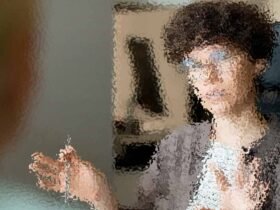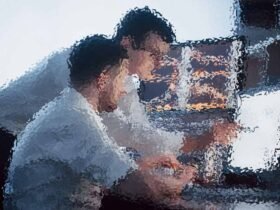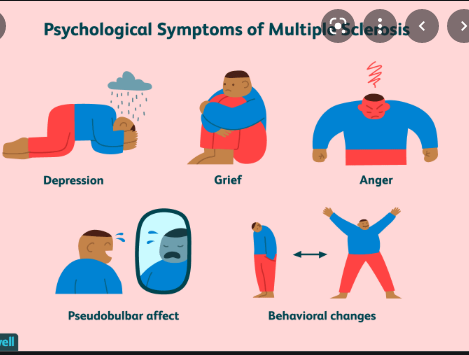Emotional and Behaviour Disorders
5.1 Introduction
Emotional and behavioural disorders may be a new concept to you but there is no need to worry because this lecture is going to deal with it. Definition, causes and identification of individuals with emotional and behaviour disorders are among the topics to be discussed here. Identification of such individuals will also be included in the discussion.
| OBJECTIVES OF THE LECTURE
At the end of this lecture, students should be able to:
|
5.2 Meaning of Emotional and Behaviour Disorders
Hallahan and Kauffman (1994) stipulate that children with emotional and behavioural problems have been known by different names such as emotionally disturbed, behaviourally disordered or disabled, socially maladjusted, to mention few. Kirk, et al., (2003) add that the characteristics of these children differ from one another depending on the type and intensity of the behaviour. Therefore, the term means conditions that exhibit one or more of the following characteristics over a long period of time and to a marked degree, which adversely affects the child’s educational performance:
- An inability to learn that cannot be explained by intellectual, sensory, or health factor;
- An inability to build or maintain satisfactory relationships with peers and teachers;
- Inappropriate types of behaviour or feelings under normal circumstance;
- A general pervasive mood of unhappiness or depression ;or
- A tendency to develop physical symptoms or fear associated with personal or school problem.
The term includes schizophrenia but does not apply to children who are socially maladjusted, unless it is determined that they are seriously emotionally disturbed. The term is also classified as:
Conduct disorder which characterized by disobedience, disruptiveness, fighting destructiveness, temper tantrums, irresponsibility, impertinence, jealousy, anger, attention seeking and boisterousness. The child usually assaults others, defies authority and strikes out with hostile aggression.
Personality disorder includes behaviours such as feelings of inferiority, self-consciousness, social withdrawal, anxiety, crying, hyperactivity, fingernails chewing, depression, chronic sadness and shyness. The child is usually nervous, shy, reclusive, and sensitive.
Immaturity includes behavior such as short attention span, preoccupation, clumsiness, passivity, daydream, sluggishness, drowsiness, masturbation and giggling.
5.3 Causes of Emotional and Behaviour Disorders
Causes of emotional and behavioural disorders are attributed to four major factors that are:
5.3.1 Biological Factors (genetic, neurological, or biochemical factors)
Behaviour and emotional disorders may be caused by genetic, neurological or biochemical factors or by a combination of them. There is a relationship between body and behaviour, therefore it is logical to look for a biological cause for certain emotional and behaviour disorders .However ,many children with emotional and behaviour disorder have no noticeable biological fault that could give explanations for their actions.
5.3.2 Pathological Family Relationships
Mental health specialists put blame to children’s behavioural problems to parents as they believe that negative interaction with parents have negative outcomes on children emotional and behavioural development. However, family influences are interactional and transactional and that the effect of parents and children on one another is reciprocal.
5.3.3 Negative Cultural Influence
Children, their families and schools are part of the culture that influences the children behaviour. Some values and behavioural standard are communicated to the child and influence the child’s behaviours for example media violence, terrors, drugs, religious restriction, and war. Evidence shows that the culture in which the child is reared exerts influences on their emotional, social and behavioural development.
5.3.4 Undesirable Experiences at School
Some children already have emotional or behavioural disorders when they begin school and others develop it during the school years. Children exhibiting disorders when they enter school may become worse or better depending on how they are handled in the classroom.
A child’s temperament and social competence may interact with classmates’ and teachers’ behaviour to contribute into the problem. The school may contribute to emotional and behavioural problems in different ways for example, teachers may be insensitive to the child’s individuality, require a mindless conformity to the rules and routines.
School discipline may be too lax, rigid or inconsistent and students who are misbehaving are rewarded with credit and attention whereas those who behave well are ignored. Parents and teacher may also hold too high or low expectations of the child achievement and conduct and judge him/her as undesirable.
5.5 Identification and Assessment of Children with Emotional and Behaviour Disorders
Children with emotional and behaviour disorders are easily identified by school personnel that few schools need to use systematic screening procedures. Most of them will not escape the notice of their parents and teachers and it is usually easy for experienced teacher to tell when the student needs help.
Their unusual language, mannerisms, and ways of relating with others soon become matters of concern to parents, teachers and even other casual observers. However, it should be noted that the younger the child, the more difficult to judge if the child’s behaviour signifies a serious problem.
Sometimes, children with emotional and behaviour disorders are undetected because teachers are insensitive to children’s problems or because the children do not stand out sharply from other children in the environment or do not exhibit problems at schools. In this case then formal screening is applicable.
5.6 Instructional Strategies
In managing children with emotional and behaviour disorders in the classroom, behaviour modification approaches should be used. Some of the components of the behaviour modification are reinforcement, gesture, and contingency, contracting, modeling, shaping and Premark’s principle. Therefore a teacher should apply the following strategies to help emotionally and behavioural disturbed children:
- Give clear and concise instructions and make sure that each instruction should be presented as a separate response opportunity, without confusing and distracting students.
- Provide as much as necessary guidance, demonstration and other prompts for desired behaviours, knowing how to gradually to remove them as the child begins to react properly without them.
- Shape the desired behaviour by progressively reinforcing the responses that are each one step near the goal.
| SUMMARY
This lecture explained that emotional and behaviour disorders has been known by different names although it means the condition that exhibit the folowing characteristics over along period and to a marked degree:
Moreover, the lecture classified an emotional and behavioural disorder into three types; conduct disorder, personality disorder and immaturity. Emotional and behavioural disorder was described as caused by biological factors (genetic, neurological, or biochemical factors), pathological family relationships, negative cultural influence, undesirable experiences at school. |




















Leave a Reply